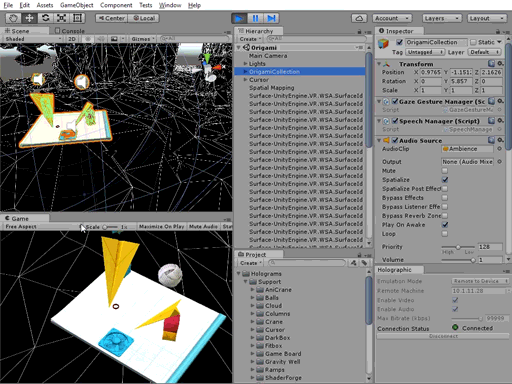With the Microsoft Hololens one step closer to being an actual consumer product (and an affordable one to boot!) Unity have stepped up their holographic development support. The current development iteration times have been a bit painful using the Hololens devkit, so this new approach should hopefully speed things up a great deal.
Holographic Emulation is a new feature that vastly reduces iteration time when developing holographic applications in Unity. Developers creating applications for Microsoft HoloLens will immediately benefit by being able to prototype, debug, and iterate on design directly from the Unity Editor without getting bogged down by long build and deploy times. Holographic Emulation works in two different modes: Remoting and Simulation.
Holographic Remoting allows you to run your application directly from the Editor after connecting to a Windows Holographic device (Microsoft HoloLens). The application will behave as if it were deployed to the device (with full sensor data and positioning), but will actually be running on the host machine. The Game view window will also allow you to see what is being rendered on the device (absent, of course, anything that the wearer of the device sees from the real world).
Holographic Simulation goes one step further, allowing you to run on a simulated device directly in the editor — in other words, no physical device is necessary. This is a great option for development when you have a limited number of devices to share among your team, or you want to get started early with holographic development before getting physical hardware.
You can read a great deal more about the new Emulation options at this blog post here.

